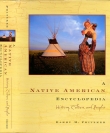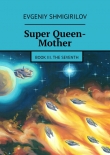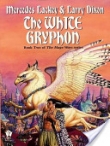
Текст книги "The British Study Edition of the Urantia Papers"
Автор книги: Tigran Aivazian
Жанр:
Религия
сообщить о нарушении
Текущая страница: 125 (всего у книги 295 страниц)
80:9.1 The racial blends in Europe toward the close of the Andite migrations became generalized into the three white races as follows:
80:9.2 1. The northern white race. This so-called Nordic race consisted primarily of the blue man plus the Andite but also contained a considerable amount of Andonite blood, together with smaller amounts of the red and yellow Sangik. The northern white race thus encompassed these four most desirable human stocks. But the largest inheritance was from the blue man. The typical early Nordic was long-headed, tall, and blond. But long ago this race became thoroughly mixed with all of the branches of the white peoples.
80:9.3 The primitive culture of Europe, which was encountered by the invading Nordics, was that of the retrograding Danubians blended with the blue man. The Nordic-Danish and the Danubian-Andonite cultures met and mingled on the Rhine as is witnessed by the existence of two racial groups in Germany today.
80:9.4 The Nordics continued the trade in amber from the Baltic coast, building up a great commerce with the broadheads of the Danube valley via the Brenner Pass. This extended contact with the Danubians led these northerners into mother worship, and for several thousands of years cremation of the dead was almost universal throughout Scandinavia. This explains why remains of the earlier white races, although buried all over Europe, are not to be found – only their ashes in stone and clay urns. These white men also built dwellings; they never lived in caves. And again this explains why there are so few evidences of the white man’s early culture, although the preceding Cro-Magnon type is well preserved where it has been securely sealed up in caves and grottoes. As it were, one day in northern Europe there is a primitive culture of the retrogressing Danubians and the blue man and the next that of a suddenly appearing and vastly superior white man.
80:9.5 2. The central white race. While this group includes strains of blue, yellow, and Andite, it is predominantly Andonite. These people are broad-headed, swarthy, and stocky. They are driven like a wedge between the Nordic and Mediterranean races, with the broad base resting in Asia and the apex penetrating eastern France.
80:9.6 For almost 20,000 years the Andonites had been pushed farther and farther to the north of central Asia by the Andites. By 3000 B.C. increasing aridity was driving these Andonites back into Turkestan. This Andonite push southward continued for over 1,000 years and, splitting around the Caspian and Black seas, penetrated Europe by way of both the Balkans and the Ukraine. This invasion included the remaining groups of Adamson’s descendants and, during the latter half of the invasion period, carried with it considerable numbers of the Iranian Andites as well as many of the descendants of the Sethite priests.
80:9.7 By 2500 B.C. the westward thrust of the Andonites reached Europe. And this overrunning of all Mesopotamia, Asia Minor, and the Danube basin by the barbarians of the hills of Turkestan constituted the most serious and lasting of all cultural setbacks up to that time. These invaders definitely Andonized the character of the central European races, which have ever since remained characteristically Alpine.
80:9.8 3. The southern white race. This brunet Mediterranean race consisted of a blend of the Andite and the blue man, with a smaller Andonite strain than in the north. This group also absorbed a considerable amount of secondary Sangik blood through the Saharans. In later times this southern division of the white race was infused by strong Andite elements from the eastern Mediterranean.
80:9.9 The Mediterranean coastlands did not, however, become permeated by the Andites until the times of the great nomadic invasions of 2500 B.C. Land traffic and trade were nearly suspended during these centuries when the nomads invaded the eastern Mediterranean districts. This interference with land travel brought about the great expansion of sea traffic and trade; Mediterranean sea-borne commerce was in full swing about 4,500 years ago. And this development of marine traffic resulted in the sudden expansion of the descendants of the Andites throughout the entire coastal territory of the Mediterranean basin.
80:9.10 These racial mixtures laid the foundations for the southern European race, the most highly mixed of all. And since these days this race has undergone still further admixture, notably with the blue-yellow-Andite peoples of Arabia. This Mediterranean race is, in fact, so freely admixed with the surrounding peoples as to be virtually indiscernible as a separate type, but in general its members are short, long-headed, and brunet.
80:9.11 In the north the Andites, through warfare and marriage, obliterated the blue men, but in the south they survived in greater numbers. The Basques and the Berbers represent the survival of two branches of this race, but even these peoples have been thoroughly admixed with the Saharans.
80:9.12 ¶ This was the picture of race mixture presented in central Europe about 3000 B.C. In spite of the partial Adamic default, the higher types did blend.
80:9.13 ¶ These were the times of the New Stone Age overlapping the oncoming Bronze Age. In Scandinavia it was the Bronze Age associated with mother worship. In southern France and Spain it was the New Stone Age associated with sun worship. This was the time of the building of the circular and roofless sun temples. The European white races were energetic builders, delighting to set up great stones as tokens to the sun, much as did their later-day descendants at Stonehenge. The vogue of sun worship indicates that this was a great period of agriculture in southern Europe.
80:9.14 The superstitions of this comparatively recent sun-worshipping era even now persist in the folkways of Brittany. Although Christianized for over 1,500 years, these Bretons still retain charms of the New Stone Age for warding off the evil eye. They still keep thunderstones in the chimney as protection against lightning. The Bretons never mingled with the Scandinavian Nordics. They are survivors of the original Andonite inhabitants of western Europe, mixed with the Mediterranean stock.
80:9.15 ¶ But it is a fallacy to presume to classify the white peoples as Nordic, Alpine, and Mediterranean. There has been altogether too much blending to permit such a grouping. At one time there was a fairly well-defined division of the white race into such classes, but widespread intermingling has since occurred, and it is no longer possible to identify these distinctions with any clarity. Even in 3000 B.C. the ancient social groups were no more of one race than are the present inhabitants of North America.
80:9.16 This European culture for 5,000 years continued to grow and to some extent intermingle. But the barrier of language prevented the full reciprocation of the various Occidental nations. During the past century this culture has been experiencing its best opportunity for blending in the cosmopolitan population of North America; and the future of that continent will be determined by the quality of the racial factors which are permitted to enter into its present and future populations, as well as by the level of the social culture which is maintained.
80:9.17 [Presented by an Archangel of Nebadon.]
PAPER № 81
DEVELOPMENT OF MODERN CIVILIZATION
Archangel
81:0.1 Regardless of the ups and downs of the miscarriage of the plans for world betterment projected in the missions of Caligastia and Adam, the basic organic evolution of the human species continued to carry the races forward in the scale of human progress and racial development. Evolution can be delayed but it cannot be stopped.
81:0.2 The influence of the violet race, though in numbers smaller than had been planned, produced an advance in civilization which, since the days of Adam, has far exceeded the progress of mankind throughout its entire previous existence of almost 1,000,000 years.
1. THE CRADLE OF CIVILIZATION81:1.1 For about 35,000 years after the days of Adam, the cradle of civilization was in south-western Asia, extending from the Nile valley eastward and slightly to the north across northern Arabia, through Mesopotamia, and on into Turkestan. And climate was the decisive factor in the establishment of civilization in that area.
81:1.2 It was the great climatic and geologic changes in northern Africa and western Asia that terminated the early migrations of the Adamites, barring them from Europe by the expanded Mediterranean and diverting the stream of migration north and east into Turkestan. By the time of the completion of these land elevations and associated climatic changes, about 15,000 B.C., civilization had settled down to a world-wide stalemate except for the cultural ferments and biologic reserves of the Andites still confined by mountains to the east in Asia and by the expanding forests in Europe to the west.
81:1.3 Climatic evolution is now about to accomplish what all other efforts had failed to do, that is, to compel Eurasian man to abandon hunting for the more advanced callings of herding and farming. Evolution may be slow, but it is terribly effective.
81:1.4 Since slaves were so generally employed by the earlier agriculturists, the farmer was formerly looked down on by both the hunter and the herder. For ages it was considered menial to till the soil; wherefore the idea that soil toil is a curse, whereas it is the greatest of all blessings. Even in the days of Cain and Abel the sacrifices of the pastoral life were held in greater esteem than the offerings of agriculture.
81:1.5 Man ordinarily evolved into a farmer from a hunter by transition through the era of the herder, and this was also true among the Andites, but more often the evolutionary coercion of climatic necessity would cause whole tribes to pass directly from hunters to successful farmers. But this phenomenon of passing immediately from hunting to agriculture only occurred in those regions where there was a high degree of race mixture with the violet stock.
81:1.6 The evolutionary peoples (notably the Chinese) early learned to plant seeds and to cultivate crops through observation of the sprouting of seeds accidentally moistened or which had been put in graves as food for the departed. But throughout south-west Asia, along the fertile river bottoms and adjacent plains, the Andites were carrying out the improved agricultural techniques inherited from their ancestors, who had made farming and gardening the chief pursuits within the boundaries of the second garden.
81:1.7 For thousands of years the descendants of Adam had grown wheat and barley, as improved in the Garden, throughout the highlands of the upper border of Mesopotamia. The descendants of Adam and Adamson here met, traded, and socially mingled.
81:1.8 It was these enforced changes in living conditions which caused such a large proportion of the human race to become omnivorous in dietetic practice. And the combination of the wheat, rice, and vegetable diet with the flesh of the herds marked a great forward step in the health and vigour of these ancient peoples.
2. THE TOOLS OF CIVILIZATION81:2.1 The growth of culture is predicated upon the development of the tools of civilization. And the tools which man utilized in his ascent from savagery were effective just to the extent that they released man power for the accomplishment of higher tasks.
81:2.2 You who now live amid latter-day scenes of budding culture and beginning progress in social affairs, who actually have some little spare time in which to think about society and civilization, must not overlook the fact that your early ancestors had little or no leisure which could be devoted to thoughtful reflection and social thinking.
81:2.3 ¶ The first four great advances in human civilization were:
81:2.4 1. The taming of fire.
81:2.5 2. The domestication of animals.
81:2.6 3. The enslavement of captives.
81:2.7 4. Private property.
81:2.8 ¶ While fire, the first great discovery, eventually unlocked the doors of the scientific world, it was of little value in this regard to primitive man. He refused to recognize natural causes as explanations for commonplace phenomena.
81:2.9 When asked where fire came from, the simple story of Andon and the flint was soon replaced by the legend of how some Prometheus stole it from heaven. The ancients sought a supernatural explanation for all natural phenomena not within the range of their personal comprehension; and many moderns continue to do this. The depersonalization of so-called natural phenomena has required ages, and it is not yet completed. But the frank, honest, and fearless search for true causes gave birth to modern science: It turned astrology into astronomy, alchemy into chemistry, and magic into medicine.
81:2.10 ¶ In the premachine age the only way in which man could accomplish work without doing it himself was to use an animal. Domestication of animals placed in his hands living tools, the intelligent use of which prepared the way for both agriculture and transportation. And without these animals man could not have risen from his primitive estate to the levels of subsequent civilization.
81:2.11 Most of the animals best suited to domestication were found in Asia, especially in the central to south-west regions. This was one reason why civilization progressed faster in that locality than in other parts of the world. Many of these animals had been twice before domesticated, and in the Andite age they were retamed once again. But the dog had remained with the hunters ever since being adopted by the blue man long, long before.
81:2.12 The Andites of Turkestan were the first peoples to extensively domesticate the horse, and this is another reason why their culture was for so long predominant. By 5000 B.C. the Mesopotamian, Turkestan, and Chinese farmers had begun the raising of sheep, goats, cows, camels, horses, fowls, and elephants. They employed as beasts of burden the ox, camel, horse, and yak. Man was himself at one time the beast of burden. One ruler of the blue race once had 100,000 men in his colony of burden bearers.
81:2.13 ¶ The institutions of slavery and private ownership of land came with agriculture. Slavery raised the master’s standard of living and provided more leisure for social culture.
81:2.14 The savage is a slave to nature, but scientific civilization is slowly conferring increasing liberty on mankind. Through animals, fire, wind, water, electricity, and other undiscovered sources of energy, man has liberated, and will continue to liberate, himself from the necessity for unremitting toil. Regardless of the transient trouble produced by the prolific invention of machinery, the ultimate benefits to be derived from such mechanical inventions are inestimable. Civilization can never flourish, much less be established, until man has leisure to think, to plan, to imagine new and better ways of doing things.
81:2.15 ¶ Man first simply appropriated his shelter, lived under ledges or dwelt in caves. Next he adapted such natural materials as wood and stone to the creation of family huts. Lastly he entered the creative stage of home building, learned to manufacture brick and other building materials.
81:2.16 The peoples of the Turkestan highlands were the first of the more modern races to build their homes of wood, houses not at all unlike the early log cabins of the American pioneer settlers. Throughout the plains human dwellings were made of brick; later on, of burned bricks.
81:2.17 The older river races made their huts by setting tall poles in the ground in a circle; the tops were then brought together, making the skeleton frame for the hut, which was interlaced with transverse reeds, the whole creation resembling a huge inverted basket. This structure could then be daubed over with clay and, after drying in the sun, would make a very serviceable weatherproof habitation.
81:2.18 It was from these early huts that the subsequent idea of all sorts of basket weaving independently originated. Among one group the idea of making pottery arose from observing the effects of smearing these pole frameworks with moist clay. The practice of hardening pottery by baking was discovered when one of these clay-covered primitive huts accidentally burned. The arts of olden days were many times derived from the accidental occurrences attendant upon the daily life of early peoples. At least, this was almost wholly true of the evolutionary progress of mankind up to the coming of Adam.
81:2.19 While pottery had been first introduced by the staff of the Prince about 500,000 years ago, the making of clay vessels had practically ceased for over 150,000 years. Only the gulf coast pre-Sumerian Nodites continued to make clay vessels. The art of pottery making was revived during Adam’s time. The dissemination of this art was simultaneous with the extension of the desert areas of Africa, Arabia, and central Asia, and it spread in successive waves of improving technique from Mesopotamia out over the Eastern Hemisphere.
81:2.20 These civilizations of the Andite age cannot always be traced by the stages of their pottery or other arts. The smooth course of human evolution was tremendously complicated by the regimes of both Dalamatia and Eden. It often occurs that the later vases and implements are inferior to the earlier products of the purer Andite peoples.
3. CITIES, MANUFACTURE, AND COMMERCE81:3.1 The climatic destruction of the rich, open grassland hunting and grazing grounds of Turkestan, beginning about 12,000 B.C., compelled the men of those regions to resort to new forms of industry and crude manufacturing. Some turned to the cultivation of domesticated flocks, others became agriculturists or collectors of water-borne food, but the higher type of Andite intellects chose to engage in trade and manufacture. It even became the custom for entire tribes to dedicate themselves to the development of a single industry. From the valley of the Nile to the Hindu Kush and from the Ganges to the Yellow River, the chief business of the superior tribes became the cultivation of the soil, with commerce as a side line.
81:3.2 The increase in trade and in the manufacture of raw materials into various articles of commerce was directly instrumental in producing those early and semipeaceful communities which were so influential in spreading the culture and the arts of civilization. Before the era of extensive world trade, social communities were tribal – expanded family groups. Trade brought into fellowship different sorts of human beings, thus contributing to a more speedy cross-fertilization of culture.
81:3.3 About 12,000 years ago the era of the independent cities was dawning. And these primitive trading and manufacturing cities were always surrounded by zones of agriculture and cattle raising. While it is true that industry was promoted by the elevation of the standards of living, you should have no misconception regarding the refinements of early urban life. The early races were not overly neat and clean, and the average primitive community rose 30-60 cm every 25 years as the result of the mere accumulation of dirt and rubbish. Certain of these olden cities also rose above the surrounding ground very quickly because their unbaked mud huts were short-lived, and it was the custom to build new dwellings directly on top of the ruins of the old.
81:3.4 ¶ The widespread use of metals was a feature of this era of the early industrial and trading cities. You have already found a bronze culture in Turkestan dating before 9000 B.C., and the Andites early learned to work in iron, gold, and copper, as well. But conditions were very different away from the more advanced centres of civilization. There were no distinct periods, such as the Stone, Bronze, and Iron Ages; all three existed at the same time in different localities.
81:3.5 Gold was the first metal to be sought by man; it was easy to work and, at first, was used only as an ornament. Copper was next employed but not extensively until it was admixed with tin to make the harder bronze. The discovery of mixing copper and tin to make bronze was made by one of the Adamsonites of Turkestan whose highland copper mine happened to be located alongside a tin deposit.
81:3.6 ¶ With the appearance of crude manufacture and beginning industry, commerce quickly became the most potent influence in the spread of cultural civilization. The opening up of the trade channels by land and by sea greatly facilitated travel and the mixing of cultures as well as the blending of civilizations. By 5000 B.C. the horse was in general use throughout civilized and semicivilized lands. These later races not only had the domesticated horse but also various sorts of wagons and chariots. Ages before, the wheel had been used, but now vehicles so equipped became universally employed both in commerce and war.
81:3.7 The travelling trader and the roving explorer did more to advance historic civilization than all other influences combined. Military conquests, colonization, and missionary enterprises fostered by the later religions were also factors in the spread of culture; but these were all secondary to the trading relations, which were ever accelerated by the rapidly developing arts and sciences of industry.
81:3.8 Infusion of the Adamic stock into the human races not only quickened the pace of civilization, but it also greatly stimulated their proclivities toward adventure and exploration to the end that most of Eurasia and northern Africa was presently occupied by the rapidly multiplying mixed descendants of the Andites.








